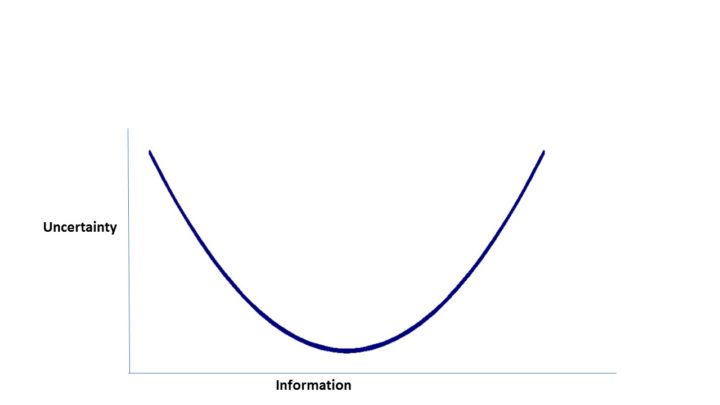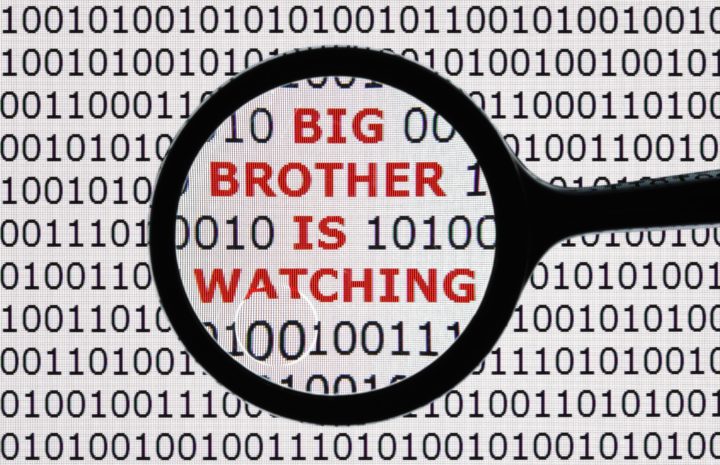A man goes to a doctor for advice, because he’s concerned that his wife is losing her hearing. The doctor says, “The first thing we have to do is find out how bad it is, so when you go home, stand in the doorway and say something. If she doesn’t hear, move halfway into the room and say it again. Then, stand next to her and say it.”
So the man goes home and looks into the kitchen. “Honey, what’s for dinner?”
No response.
He walks halfway into the kitchen and says, “Honey, what’s for dinner?
Again no response.
Finally, he gets right behind her and says, “Honey, what’s for dinner?”
She turns and says, “For the third time, CHICKEN!”
I liked this joke when I first heard it earlier this week, and it especially resonated because of a speech I delivered on the topic of creating an ethical sales culture. What’s the connection?
One of the points that I made is that often when a sales leader is unhappy with sales behavior, their first instinct is to figure out what’s wrong with the salesperson. Maybe they need a little more motivation, or need to be counseled on ethics, or maybe they’re just the wrong person for the position. But, how often do they look within for the causes of the behavior? How often does it even enter their minds that maybe the fault lies within themselves?
The example I used in my speech was Wells Fargo. After their scandal broke, they touted the fact that they had fired 5,300 employees for unethical behavior. I wonder how many of those employees were actual perpetrators, versus how many were victims? By that, I mean victims of an ultra-high-pressure culture in which they were monitored up to four times a day and “hounded, berated or demeaned” when they were inevitably short of impossible quotas. Under such conditions, is it any wonder that many saw no recourse but to cheat and open unauthorized accounts?
But it does not have to be as egregious in scale or degree as Wells Fargo to be a potential problem. I’ve seen it on a much lesser scale in so many ways. The sales VP who stresses the value of long term relationships but rewards and punishes short term results; the sales manager who wants her reps to take initiative but immediately steps in to rescue a sale; the director who overlooks a little white lie about delivery dates because it salvages a big deal.
My point is not to deny the importance of personal accountability, but to affirm it. Someone should definitely be held accountable—but look within first. This is not only right, but practical. If the behavior is caused by something you’re doing or not doing, it’s not going to go away just because you counseled or fired the rep. It will likely infect the rest of the team, and anyone you hire to replace the “bad apple.”
Maybe the first rule of sales coaching should be: “Check your own hearing first.”
One of the tenets of lean is constant and continuous improvement, and in that spirit I have modified my model slightly, thanks to a new Harvard Business Review article by Nick Toman and Brent Adamson, The New Sales Imperative.
As I’ve written before, your purpose—in fact, the only reason salespeople are relevant—is to help your customers make effective buying decisions. Complex decisions can’t be made without investing time and effort to gather, understand, analyze and apply a lot of information, but salespeople often make it much harder than it should be. To that end, the goal of Lean Communication for Sales is to improve your buyers’ RoTE, or Return on Time and Effort. In lean terms, you provide useful information that helps improve their outcomes, and express it concisely and clearly.
To a great extent, their article reinforces what I’ve been saying about the importance of making it easier for people to decide. As their research shows, making buying easier results in a 62% increase in the likelihood of winning a high-quality sale.
But as new research that Toman and Adamson adduce shows, there is another hidden form of waste that needs to be removed from the buying journey: uncertainty. Their research shows that customers are “deeply uncertain and stressed”, and second-guess their decisions more than 40% of the time! This uncertainty can be paralyzing, and paradoxically it’s the good intentions of the salesperson that exacerbates it. That’s because they try to be responsive and attack uncertainty with even more information. But unfortunately, beyond a certain point, more information and more choice actually increases uncertainty, as you can see in the figure above.
This is a useful reminder, but most of us already have at least an inkling of this. The real difficulty is figuring out where the bottom of that curve is so that you can get uncertainty as low as possible but then stop. That’s where their article is particularly helpful. They lay out a four-step approach for being less responsive and more prescriptive. Out of deference to them and to HBR, I’m not going to try to summarize their ideas here—I encourage you to read it here.
What I am going to do, however, is spend some serious time thinking about how to incorporate the idea of reducing uncertainty into Lean Communication for Sales. As a start, I’m changing the goal of improving RoTE to RoUTE!
Sales targets are a good thing. Challenging goals, coupled with rewards for meeting them, can be enormously powerful in motivating performance and driving results. But there is a downside: fixating too much on the numbers and thus forgetting the person on the other end of that number can backfire, leading to customer dissatisfaction and lower sales.
Don’t deemphasize the numbers, but counterbalance the focus on numbers with reminders of who benefits from what you sell. I’d like to propose making the customer—not as a “target”, or a “wallet”, but as a real, living, thinking and feeling person—a major focus of your sales efforts.
First, a few examples to illustrate the power of personalization:
· One study showed that attaching a digital picture of the patient to a medical file increased the amount of time that radiologists spent looking at x-rays, and led to them spotting more unlooked-for issues.
· Employees in a call center dedicated to soliciting donations from alumni for scholarship money were connected with students who had benefited from the scholarships, and heard about the difference the money had made in their lives. One month later, they had brought in an average of $506 per week as compared to $186, an increase of 172%.
· When I worked in a bank, we had targets for cross-selling additional services to increase profitability. One product was credit life insurance, which was sold to people taking out car loans or consumer loans. The average was about 25% or less per loan made, except for one lady, Rosa, who consistently had almost 100% success. When we asked her why she was so successful, she told us that a close relative of hers had died, and his spouse ended up losing the car because she could not make the payments. Because she believed so strongly in the benefit, it made it easy for her to pass on that belief to customers.
· Here’s a negative example: in wartime soldiers usually depersonalize the enemy by giving them a nickname (often derogatory), which makes the idea of killing them a little less horrible.
What these examples point out is the importance of personalizing the outcomes that you sell. When you can connect your sales efforts to real results for real people, you will have a much stronger intrinsic reason to succeed than just to selfishly make a number. You will be guided by a sense of purpose which can be a much more powerful motivator than financial self-interest. Which achievement would you be more likely to brag about to your friends, making your number or making a difference in someone’s life?
We all know that testimonials from satisfied customers can be useful tool to convince customers, but if you are a sales manager, you might see even better results by using those testimonials for your own people.
When you start seeing your customers as a person and not a target, they will notice the difference. Trust requires more than just competence; they must also perceive that you have a genuine concern for their welfare. I call it the grandma rule: If that were your grandma sitting across the desk from you, what would you recommend to her?
It’s a commonplace in management that what gets measured gets done, and for the most part I agree with it. But when it’s taken too far it can backfire on you—sapping morale, breeding resentment, and fostering destructive sales behaviors.
I’ve been doing some research into the Wells Fargo scandal for a speech I’m delivering next week about ethical sales cultures. One of the most fascinating documents is a copy of the lawsuit that the City of Los Angeles filed against Wells in May 2016. It details the pressure-cooker management practices that branch managers and above followed to try to fulfill ambitious—some would say unrealistic—goals for cross-selling in connection with the bank’s “Going for Gr-eight” program. There is a lot of fodder in there for anyone studying unhealthy management practices, but what I found the most repellant was the extreme monitoring and measurement that went on.
In many branches, daily sales for each branch and each employee were reported and discussed 4 times a day, at 11, 1, 3 and 5pm! Some branches, doubtless run by high achievers who really wanted to impress their bosses, had hourly calls. The verb discussed is a euphemism, because the report further states that “managers constantly hound, berate, demean and threaten employees to meet unreachable quotas.”
Is it any wonder that employees resorted to cheating? And by cheating, I mean opening accounts for customers without their knowledge or authorization: 1.5 million deposit accounts and 500,000 credit card accounts. While all this measuring paid dividends in the form of a steady rise in the bank’s stock price, it also ended in congressional investigations (and what CEO would not relish the opportunity to be lambasted on national TV by Elizabeth Warren?), resignations, penalties and lasting damage to its reputation.
We all laugh at the stereotype of the helicopter parent, who can’t seem to let go when their kids go to college, constantly hovering over them to monitor what they’re doing and to step in to help them whenever they feel it’s necessary. I wonder how many people who laugh at that behavior in others might be guilty of it themselves when it comes to how they manage their sales teams?
Wells Fargo was an extreme case, but the potential for helicopter managing exists everywhere, particularly under pressure of ambitious sales quotas. When sales slip—or just don’t rise fast enough—it’s human nature for the manager to dig in and figure out what’s going on, or to lend a hand to get a deal done. But if that level of intervention doesn’t work right away, it’s also human nature to redouble your efforts and ratchet up the pressure. As psychologist Edward Deci says, “Control is an easy answer,”[1] but that constant monitoring and pressure comes with a price:
- The most immediate and obvious price is that eats into selling time, forcing salespeople to constantly attend calls and file reports.
- It kills trust. How do you get your buyers to trust your account managers when you don’t?
- It drives short term thinking. I once had a client who hired me to train their enterprise reps to develop account plans meant to cultivate long-term, forward-thinking relationships with clients; but then held their feet to the fire with quarterly quotas.
- It stifles outside-in thinking. Fear makes us inwardly focused, which makes it difficult to see things from the customer’s perspective. At the same time, you begin to see each customer as a target and not a person.
- It stifles creativity. Pressure actually does improve performance—for routine tasks that are done the same way every time. But pressure degrades performance in tasks that require creativity and resourcefulness, which pretty much describes high-level B2B complex sales. (In Wells’ case, the pressure did make their people more creative—in finding ways to cheat the system
- It can lead to a vicious cycle, where too much pressure hampers performance, which leads to more pressure. Like a drug that requires increasing amounts to have the same effect, it can become the monster that must continually be fed.
Keep in mind that the only reason the Wells Fargo scandal came to light is because it was so egregious, which makes one suspicious that this kind of behavior is far more prevalent than we know. Most sales managers are not that extreme, of course, but pressure does funny things to people, including turning managers into stalkers. Ask yourself: do you hover too much?
[1] Why We Do What We Do, Edward L. Deci and Richard Flaste.






